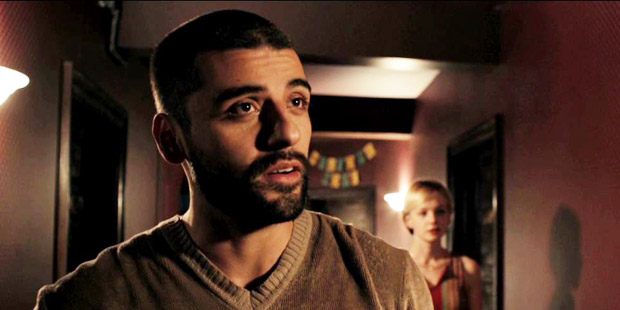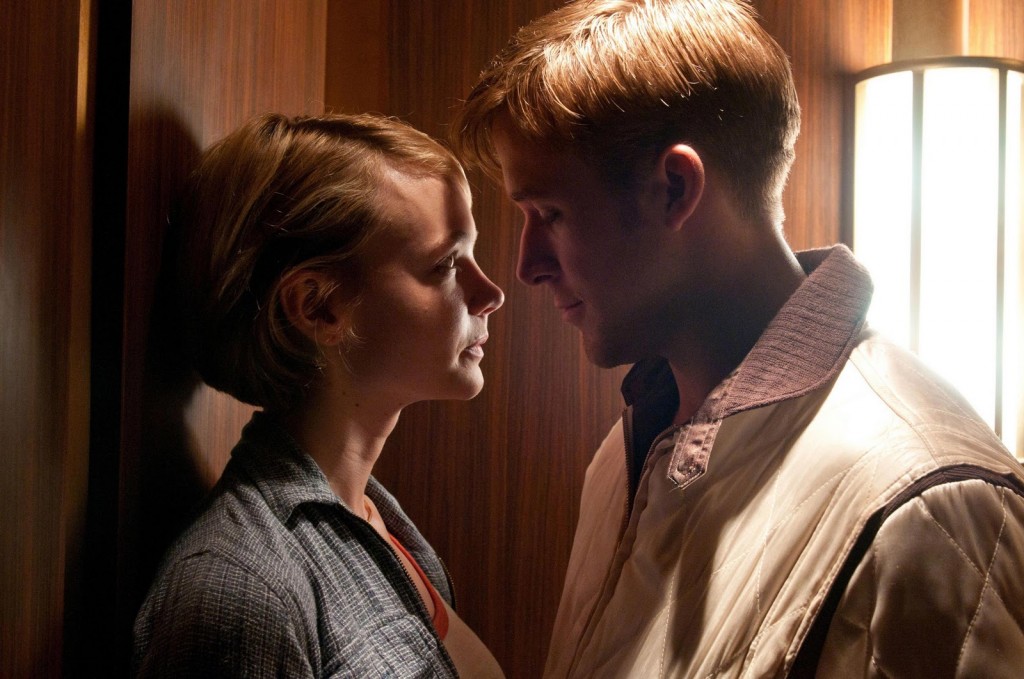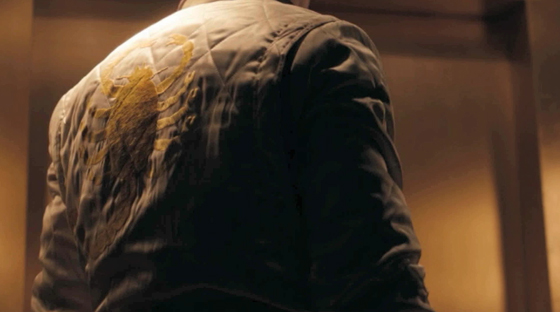It’s getting colder out there. It’s getting darker. In honor of “Noirvember,” Deadshirt’s decided to turn the spotlight on our favorite modern noir films of the last couple decades. Eyes forward, put the money in the bag and don’t get cute. This is Neo-Noirvember.
Drive is a 100-minute gutshot. Drive is director Nicolas Winding Refn’s most accessible film by a wide margin, probably because it’s a pastiche with a very distinguished pedigree: who is Ryan Gosling’s nameless driver if not the reincarnation of Alan Ladd’s wandering cowboy Shane or any of a countless number of god-damn-he’s-so-cool Steve McQueen roles? While ostensibly set in modern day Los Angeles, Drive’s palette is certainly evocative of the sizzling pinks of Miami Vice and other ’80s fare. Even the plot—a mechanic/stuntman falls in love with a married waitress and has to protect her from her husband’s gangland debtors after a robbery goes wrong—is more than a little familiar. That almost comforting familiarity gradually morphs into a stomach-churning unease as the film heads to its inevitable conclusion.
Winding Refn powerloads Drive with a stellar cast. From the second he steps on screen, you’re mesmerized by Bryan Cranston’s hobbled auto mechanic Shannon. In his scenes with Gosling, he fills the quiet between them with a manic chatterbox nervousness. A strangely eyebrowless Albert Brooks turns in a career-best performance as Bernie Rose, a mundane gangster happy to collect his percent of Shannon’s up-and-coming stockcar winnings until his hand is forced. Carey Mulligan plays Irene with a quiet vulnerability and dignity that’s perfectly in synch with Gosling’s borderline bashfulness. And even though he’s in the movie for less than ten minutes, a pre-Inside Llewyn Davis Oscar Isaac (playing Irene’s well-meaning loser ex-con husband Standard) completely dominates the scenes he is in.
Can’t talk about Drive without talking about Driver himself. Winding Refn’s film saddles him with so many potentially goofy affectations— leather driving gloves, a metal toothpick, the white satin scorpion jacket that’s practically a character in its own right—that it’s a testament to Gosling’s skill as an actor that he pulls all of it off. Consider the opening of Drive, a sequence that’s four years old and already feels iconic. As Chromatics’ “Tick of the Clock” pulsepounds under our introduction to the film, we’re shown a few things about Driver: he’s a professional, he’s very cautious, and he knows how to fucking book it. As Gosling escorts his paying customers (a pair of petty thieves) through the backstreets and intersections of LA, past police cruisers and a helicopter, we’re flying with them at the edge of our seats.
At first blush, what we know of Driver’s past—that he stumbled into Shannon’s garage looking for a job from parts unknown, the Brooklyn squeak in his voice, that he lives in a kind of self-imposed isolation—suggest a man who’s seen trouble and is desperate to avoid it. Driver’s interactions with Irene are even charmingly chaste, extending only as far as tender handholding as he takes her out for a ride in his car. It’s only when, after an old client tries to strike up conversation with Driver at a diner, that we get a glimpse at his true self. “How ’bout this. You shut your mouth. Or I’ll kick your teeth down your throat and I’ll shut it for you.” Later, after Irene’s husband is killed, we watch Driver viciously assault and threaten gangster moll Blanche (Christina Hendricks) for her hand in his death. Beneath his lidded eyes and withdrawn smile, Driver isn’t a nice guy. He’s an unwitting monster, a terrifying force of nature that can’t help himself from committing violence. At one point toward the end of the film, Driver references the fable of The Frog and The Scorpion in a phone conversation with Bernie. And while he’d like very much to be the frog who ferries people to the other side, Driver is unable to escape the fact that he’s the scorpion on the back of his jacket.
Drive is a movie that feels like it builds to exactly one scene, and it’s a really killer one. After telling Irene of her husband’s debtors and his failed attempt to placate the mob, Driver offers her the $1 million he unwittingly stole. She slaps him, the quick moment ringing in the air and Driver’s shame and heartbreak plain on his face. Afterward, they get in an elevator with a man (that unbeknownst to either of them) is a hired gun sent to kill both of them. Driver immediately reads the man and the movie shifts into almost painfully slow motion as he shields Irene and passionately, tenderly kisses her. For not even a moment, Driver and Irene are able to love each other. After what feels like a mini-eternity, Drive snaps back into focus and we watch Gosling almost effortlessly disarm the man and gruesomely cave his head in with his foot.
Driver turns with his truest self laid out before Irene, who can only look at him with visible horror and fear. They had everything and it’s gone now. Neither of them is able to say anything, and the elevator door closes. As Driver pants from exertion, it looks as if the golden arachnid on the back of his jacket is breathing too.
Although cars are certainly front and center in Drive, they’re set dressing. The “drive” the film’s title refers to is the inherent desire at the core of its cast — Driver’s doomed attempt to go straight and be good, Irene’s longing for an escape from her lifeless marriage, even Nino (Ron Perlman) and his ruthless demand for respect. And none of them get what they so desperately want. Driver, bleeding and likely dying, does the only thing he can do: He drives away.
Check back each week for more Neo-Noirvember essays from Deadshirt.







